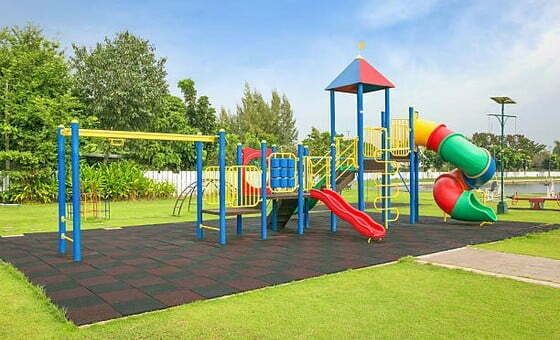PLAYGROUND SAFETY
- The playground should have safety-tested mats or loose-fill materials (shredded rubber, sand, wood chips, or bark) maintained to a depth of at least 9 inches (6 inches for shredded rubber). The protective surface should be installed at least 6 feet (more for swings and slides) in all directions from the equipment.
- Equipment should be carefully maintained. Open "S" hooks or protruding bolt ends can be hazardous.

- Swing seats should be made of soft materials such as rubber, plastic or canvas.
- Make sure children cannot reach any moving parts that might pinch or trap any body part.
- Never attach—or allow children to attach—ropes, jump ropes, leashes, or similar items to play equipment; children can strangle on these. If you see something tied to the playground, remove it or call the playground operator to remove it.
- Make sure your children remove helmets and anything looped around their necks.
- Metal, rubber and plastic products can get very hot in the summer, especially under direct sun.
- Make sure slides are cool to prevent children's legs from getting burned.
- Do not allow children to play barefoot on the playground.
- Parents should supervise children on play equipment.
- Parents should never purchase a home trampoline or allow children to use a home trampoline because of the risk of serious injury even when supervised.
- Surrounding trampoline netting offers a false sense of security and does not prevent many trampoline-related injuries. Most injuries happen on the trampoline, not from falling off.
- Homeowners should verify that their insurance policies cover trampoline-related claims. Coverage is highly variable and a rider may need to be obtained.
If children are jumping on a trampoline, they should be supervised by a responsible adult, and only one child should be on the trampoline at a time; 75% of trampoline injuries occur when more than one person is jumping at a time.